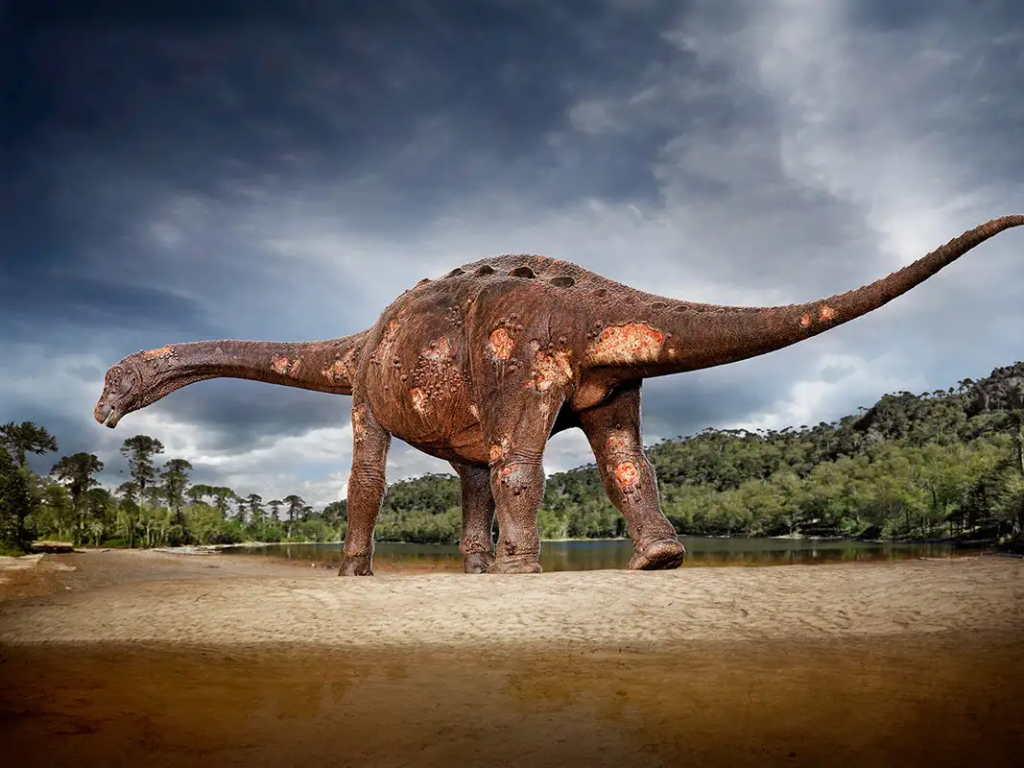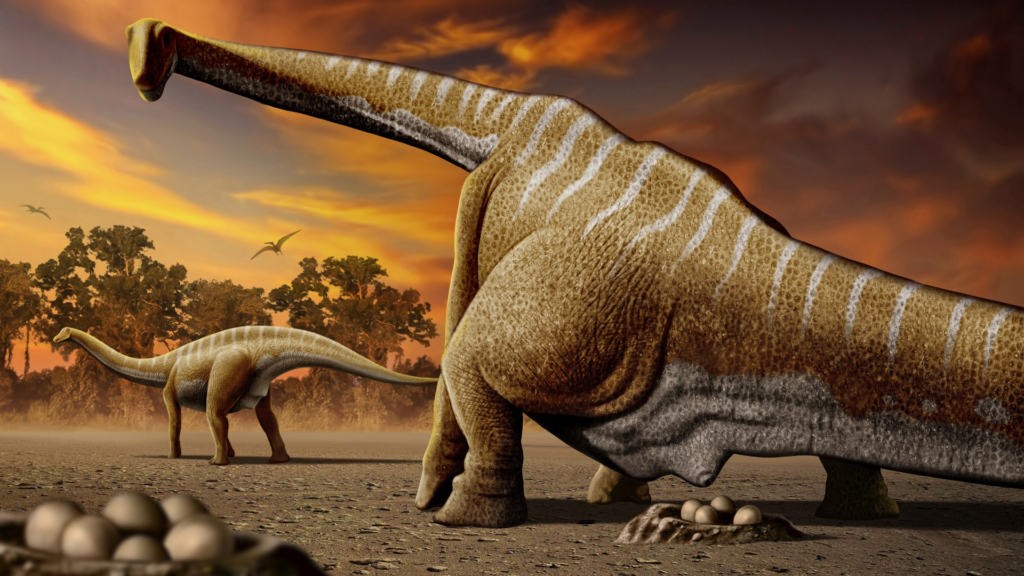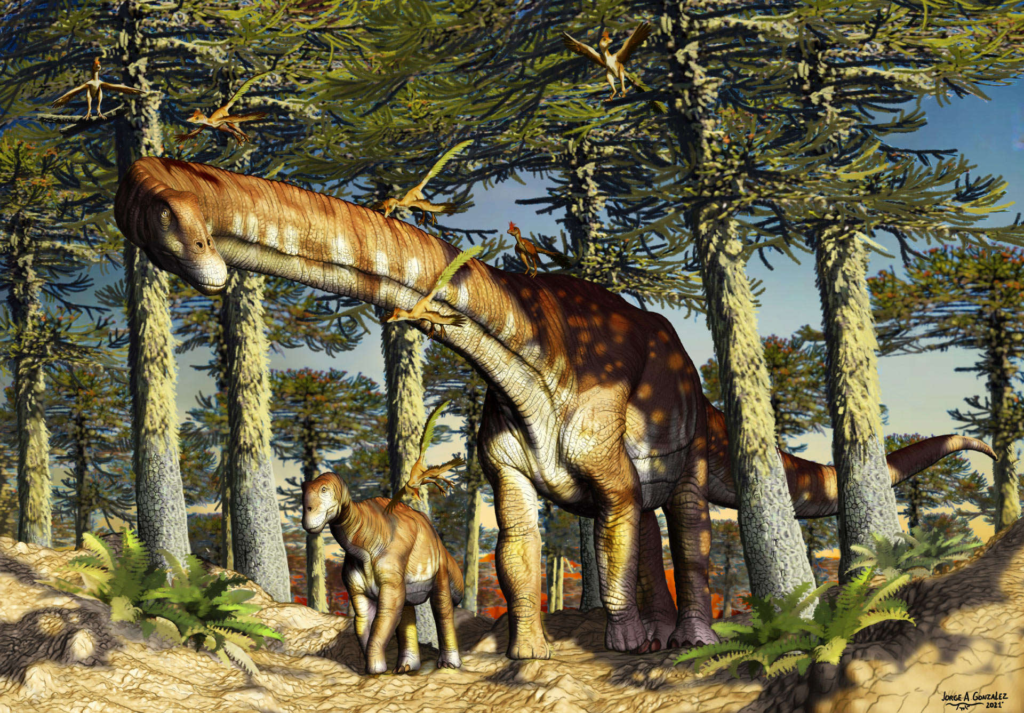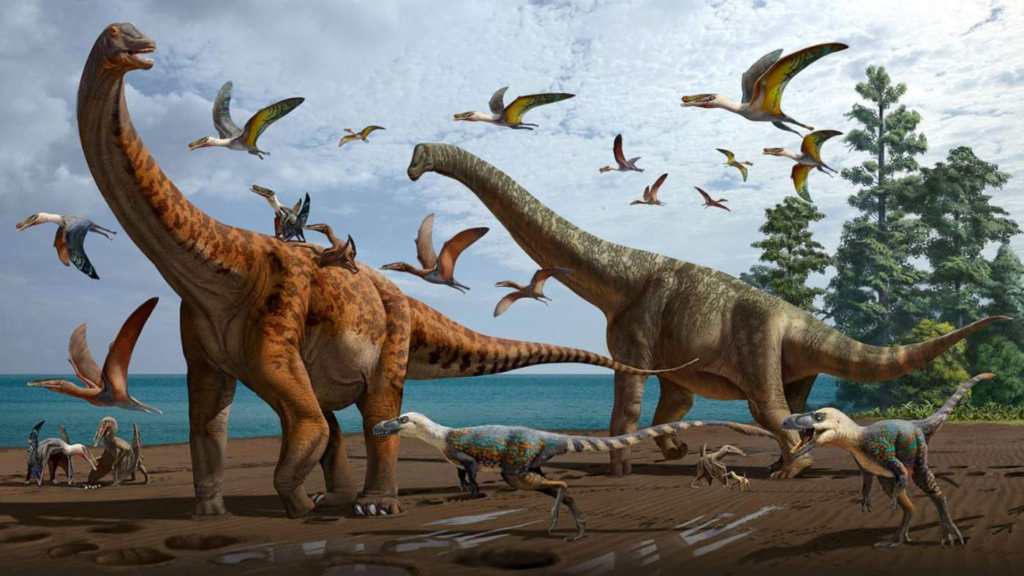Explore the fascinating history and groundbreaking discoveries of Titanosaurs, unveiling the giants that once roamed Earth. Learn about their evolution and the incredible stories behind their existence.
Titanosaurs : Introduction
In the vast tapestry of Earth’s history, the Mesozoic Era stands as a testament to the colossal creatures that once roamed the planet. Among the giants of this bygone era were the Titanosaurs, a subgroup of sauropod dinosaurs that reigned supreme during the Late Cretaceous Period, from 145 million to 66 million years ago. These colossal herbivores, characterized by their long necks and tails, captivate the imagination with their sheer size and dominance.
In the modern world, the blue whale takes the crown as the largest living mammal, but in the annals of history, Titanosaurs claim the title for the largest terrestrial animals to have ever existed. Let’s delve into the staggering dimensions of eight remarkable Titanosaurs that once roamed the Earth.

Dreadnoughtus : The colossus of patagonia
One of the mghtiest Titanosaurs, Dreadnoughtus, hails from the rock deposits of southern Patagonia, Argentina. With a colossal length of approximately 26 meters (85 feet) and an estimated mass of 59 metric tons (65 tons), Dreadnoughtus possibly holds the record as the largest Titanosaur known to us. Dating back to around 77 million years ago, this colossal herbivore remains a symbol of the prehistoric powerhouses that once roamed South America.

Patagotitan mayorum : The enormous titan
Reigning as a potential contender for the title of the world’s largest terrestrial animal, Patagotitan mayorum’s colossal size is inferred from a collection of fossilized bones, including a femur measuring a staggering 2.4 meters (8 feet). Thought to have weighed approximately 70 metric tons (77 tons) and measuring an impressive 37.2 meters (122 feet) in length, Patagotitan traversed the landscapes of Earth 100 to 95 million years ago.

Argentinosaurus : The argentine giant
Discovered in 1987 on an Argentinean ranch, Argentinosaurus shook the paleontological world. Although no complete skeletons have been found, estimates suggest a length ranging from 37 to 40 meters (121 to 131 feet) and a weight of 90 to 100 metric tons (99 to 110 tons). If confirmed, Argentinosaurus could claim the title as both the largest dinosaur and land animal ever known.

Saltasaurus : The armored titan
Named after the city of Salta in northern Argentina, Saltasaurus took a unique approach to defense. While smaller than some Titanosaurs, measuring 12.2 to 12.8 meters (40 to 42 feet) and weighing slightly under 7 metric tons (7.7 tons), Saltasaurus sported a defensive array of osteoderms, bony armored plates that made it a formidable opponent against predators.

Rapetosaurus Krausei : The malagasy titan
Unearthed in northern Madagascar, Rapetosaurus krausei revealed one of the most complete Titanosaur skeletons to date. With a juvenile specimen measuring 8 meters (26 feet) and estimates suggesting fully grown individuals could reach 15 meters (49 feet), Rapetosaurus thrived around 70 million years ago, just before the devastating K-T extinction event.

Austroposeidon magnificus : Brazil’s giant
Hidden in a museum for over 60 years, the fossils of Austroposeidon magnificus were eventually recognized as belonging to a new Titanosaur species. With a length of 25 meters (82 feet), this Brazilian giant lived between 84 million and 66 million years ago, showcasing the diverse range of Titanosaurs across the continents.

Paralititan stromeri : The Egyptian behemoth
Unveiled in 2001 in Egypt, Paralititan stromeri stunned researchers with its massive femur, reaching 1.69 meters (5.5 feet). Estimates of its length range from 25 to 30.5 meters (82 to 100 feet), with a weight between 60 to 75 metric tons (66 to 83 tons). Prowling the mangrove swamps around 94 million years ago, Paralititan stands as a testament to the Titanosaurs’ global dominance.

Shingopana songwensis : Tanzania’s petite titan
Described in 2017, Shingopana songwensis earned its name, meaning “wide neck” in Swahili, from its inflated cervical vertebrae. Despite being among the smallest Titanosaurs, measuring only 8 meters (26 feet) and weighing an estimated 5 metric tons (5.5 tons), Shingopana contributes to the rich tapestry of Titanosaur diversity discovered in the Galula Formation of Tanzania, dating back 100 to 70 million years.

Conclusion
The titanosaurs, with their colossal sizes and unique adaptations, paint a vivid picture of Earth’s prehistoric landscapes. These giants, now immortalized in the fossil record, continue to captivate our imagination, offering a glimpse into a world where massive herbivores roamed freely, shaping the ecosystems of the ancient past.
To explore more news : Click Here
ALSO READ : The Enigmatic And Fascinating Origins Of The Name “Europe”




































